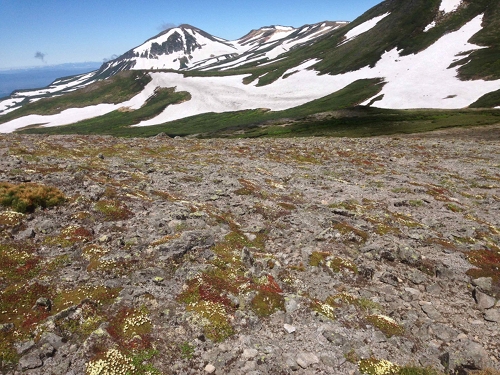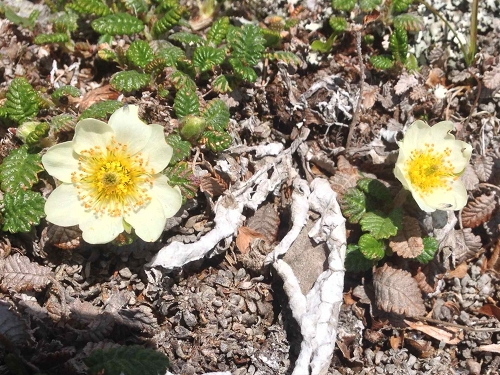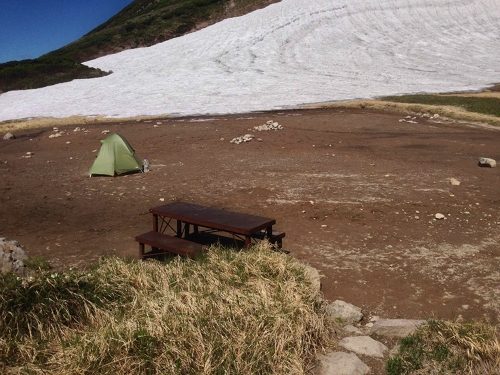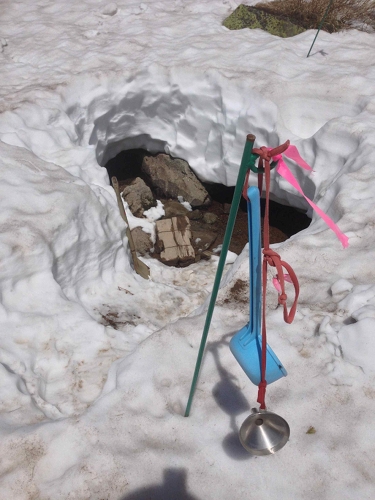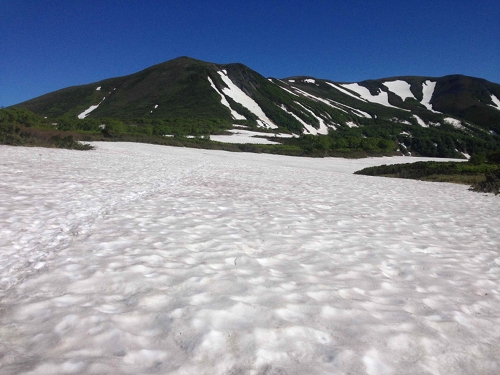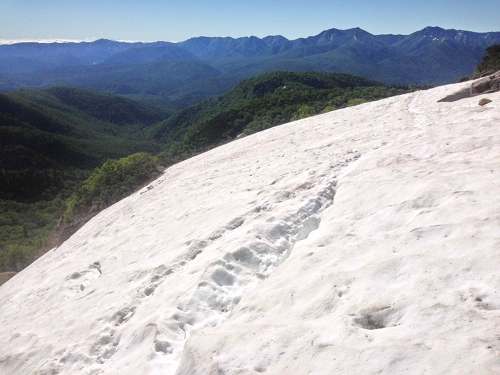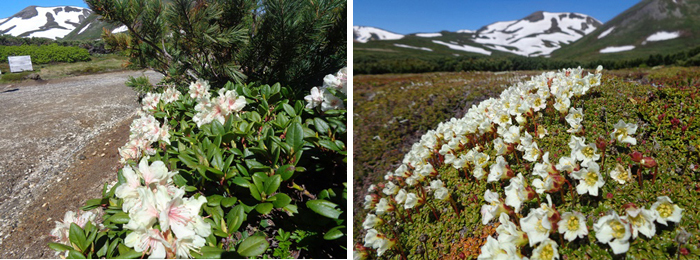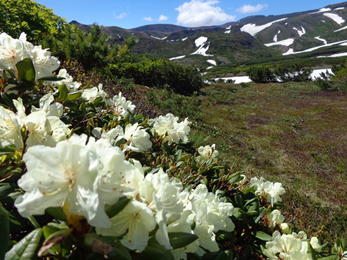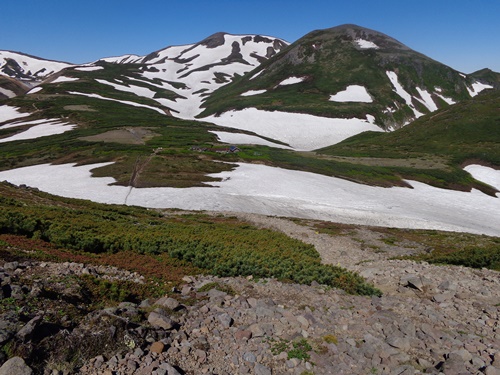On the Mt. Midori ridgeline, the Diapensia lapponica subsp. obovata, Potentilla matsumurae, Rhododendron aureum, and Oxytropis japonica var. sericea are about to bloom, while the Lagotis yesoensis are continuing to flower. A small number of Dryas octopetala var. asiatica are also blooming. While it’s possible that a change in the weather could bring on an explosion of flowers, I did not get the impression that the flowering is progressing particularly quickly at the present time.
Photos: Looking toward Mt. Asahi from the Mt. Midori ridgeline (left) and blooming Dryas octopetala var. asiatica (right) Jun. 24
Photos: Looking toward Mt. Asahi from the Mt. Midori ridgeline (left) and blooming Dryas octopetala var. asiatica (right) Jun. 24
